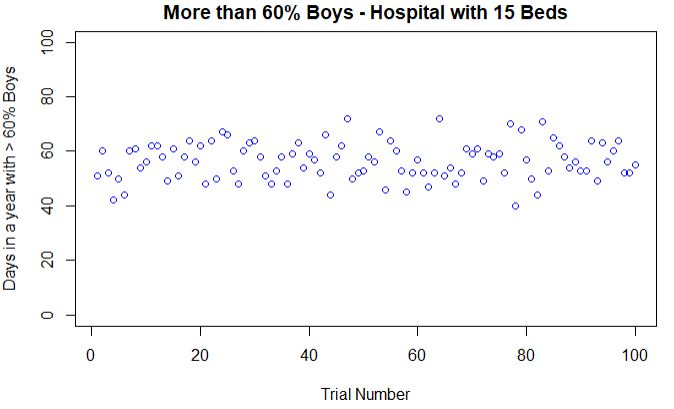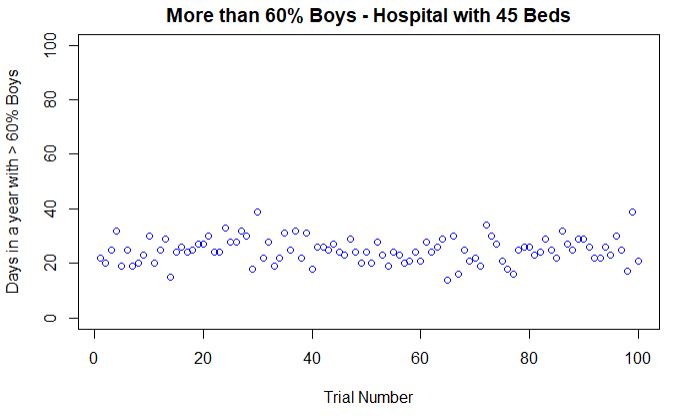A certain town is served by two hospitals. In the larger hospital about 45 babies are born each day, and in the smaller hospital about 15 babies are born each day. As you know, about 50 percent of all babies are boys. However, the exact percentage varies from day to day. Sometimes it may be higher than 50 percent, sometimes lower.
For a period of 1 year, each hospital recorded the days on which more than 60 percent of the babies born were boys. Which hospital do you think recorded more such days?
b The larger hospital
Judgment under Uncertainty: Heuristics and Biases, Tversky and Kahneman
b The smaller hospital
b About the same
If you recall the law of large numbers, you would have guessed the correct answer, i. e. the smaller hospital. Because as the number of births increases, the gender of the baby comes closer to the expected percentage of 50.
If you still doubt, let’s run a simple Monte Carlo run using the following R code,
days <- 365
birth <- 15
boy <- 0.5
boys <- replicate(days, {
prob_birth <- sample(c(0,1), birth, prob = c((1-boy), boy), replace = TRUE)
mean(prob_birth)*100
})
sum(boys > 60)Run this code 100 times and plot the answers, the probabilities of a day in which more than 60% were boys:

Now, change the number of births to 45 and re-run the calculations:

What about more than 60% of girls?
Let me end this piece with this one. Which hospital do you expect more number of days with less than 40% of boys? No marks for guessing: it is still the small hospital.
Tversky, A.; Kahneman, D., Science, 1974 (185), Issue 4157, 1124-1131

